#TripleBottomLine
Explore tagged Tumblr posts
Text
Towards a Sustainable Future: Balancing Growth and Responsibility in Scotland
Sustainable Development: Balancing Growth and Responsibility in Scotland Hello, dear readers! Today on "Perspectives Unbound," we delve into the concept of sustainable development and its critical importance for the future of Scotland. As we face pressing challenges such as climate change, resource depletion, and economic inequality, the need for a balanced approach to growth has never been more urgent. Sustainable development is not just about environmental stewardship; it encompasses social equity and economic viability as well. For Scotland, a nation with natural beauty and rich cultural heritage, prioritising sustainability is essential not only to preserve our environment but also to ensure a prosperous future for all citizens. At the heart of sustainable development lies the concept of the triple bottom line: people, planet, and profit. Businesses and policymakers must consider the impact of their actions on society and the environment alongside financial outcomes. When we shift our focus from short-term gains to long-term sustainability, we create a framework that supports resilient communities and ecosystems. One of the key areas where we can make significant strides in sustainable development is in energy production. Scotland has some of the largest renewable energy resources in Europe, particularly in wind and hydroelectric power. By investing in and expanding renewable energy projects, we can not only reduce our carbon footprint but also create jobs and stimulate local economies. Transitioning to a green energy economy presents an opportunity for Scotland to become a leader in innovation and sustainability on the global stage. Furthermore, sustainable agriculture must also be a priority. Encouraging local farming practices that prioritise ecological balance can significantly contribute to food security while minimising the impact on our environment. Supporting initiatives that promote organic farming, agroforestry, and community-supported agriculture can strengthen local food systems and foster deeper connections between consumers and producers. However, to effectively embrace sustainable development, we must engage citizens in this journey. Public awareness and education play a vital role in driving change. By fostering a culture of sustainability in our communities, we empower individuals to make informed choices that support sustainable practices in their daily lives. Lastly, inclusivity is paramount. Ensuring that all voices are heard and considered in discussions around sustainable development is essential for creating equitable solutions. Addressing the needs of the most vulnerable in our society ensures that everyone can benefit from sustainable growth, leading to a more just and cohesive society. In conclusion, sustainable development is a pathway toward a thriving future for Scotland. By prioritising ecological health, social responsibility, and economic viability, we can create resilient communities that are well-prepared for the challenges ahead. Thank you for joining today’s exploration of sustainable development and its vital importance for Scotland’s future. Together, let's foster an inclusive dialogue on how we can build a more sustainable and prosperous nation. Warm regards, Alastair Majury *Perspectives Unbound* --- *Stay tuned for more insights on how sustainable practices shape our narratives on freedom, responsibility, and growth in Scotland and beyond.*
#SustainableDevelopment#Scotland#EnvironmentalStewardship#SocialEquity#EconomicViability#RenewableEnergy#GreenEconomy#SustainableAgriculture#TripleBottomLine#CommunityEngagement#ClimateAction#InclusiveGrowth#LocalFarming#PublicAwareness#EcologicalBalance
1 note
·
View note
Text
Beyond Profit: Redefining Corporate Purpose for C-Suite Leaders
Part 1: Poetic Content Limericks: A C-suite titan named Sue, Thought profits were all she should pursue. But wisdom did strike, With a societal like, Her company’s purpose shone anew. There once was a leader quite grand, Whose firm made a mark on the land. Not just for the gain, But to lessen the pain, Their mission, a helping hand. In boardrooms of glass and of steel, A vision began to…
#BusinessEthics#consciouscapitalism#CorporateBard#CorporateBardExcellence#CorporateBardsRadar#corporatepurpose#CorporateSocialResponsibility#CorporateValues#CSR#CSuiteMentor#CSuiteRadar#DhananjayParkhe#EmployeeEngagement#impactinvesting#innovation#Leadership#LeadershipDevelopment#purposeeconomy#purposefulleadership#sharedvalue#socialimpact#societalcontribution#stakeholdercapitalism#sustainablebusiness#SWOTanalysis#triplebottomline#valuebasedleadership
0 notes
Video
youtube
Justice Awaits Sustainable Futures Now
🌍 TEAM UP FOR GLOBAL GOALS with Singularity Solutions! 🌱 Join us in creating positive change for communities everywhere. Together, we can achieve more! 🙌 🔔 Don’t forget to SUBSCRIBE, LIKE, and SHARE our journey! Let’s make the world a better place, one step at a time! 💪 #GoodGovernance #socialresponsibility #sustainabledevelopment #triplebottomline #EquityAndJustice #EmpowerCommunities #socialprotection #EqualOpportunities #InclusiveGrowth #humanrightsforall #dignityforall #endpoverty #CSRMatters #SustainableBusiness #EthicalLeadership #PeoplePlanetProfit #corporateresponsibility #impactfulbusiness #ProtectOurPlanet #EnvironmentalStewardship #socialjusticenow #equalityforall #planetandpeople #SustainableFuture #DemocraticGovernance #LeadershipWithPurpose #citizenparticipation #RuleOfLaw #governanceforall #TransparentLeadership #buildabetterfuture #UnityInDiversity #strengthincommunity #LegacyOfLeadership #InspiredToLead #collectiveprosperity
0 notes
Photo
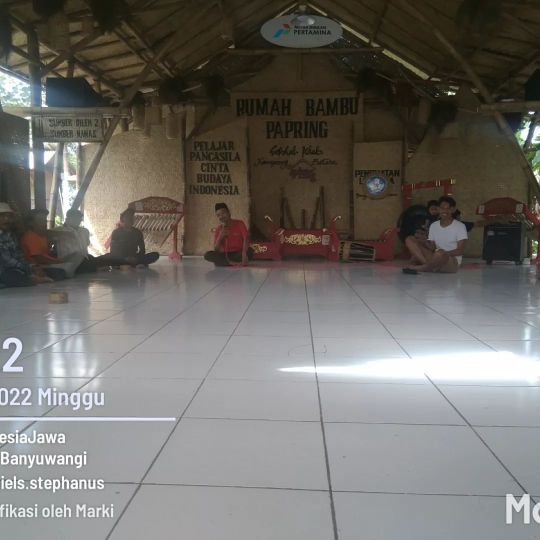
Perjalanan Ke Timur #02... Belajar tentang Kopi di Kampung Batara Papring Kalipuro... Berkesempatan berkunjung ke Kampung Batara di Lingkungan Papring Kalipuro... Sekadar belajar tentang budidaya, panen, pasca panen & penyajian kopi bersama Cak Emir, salah seorang roaster andalan... Pengetahuan & pengalaman Cak Emir dibagikan pada kawan2 petani kopi di Papring... Ilmu mahal yang dibagikan secara gratis untuk meningkatkan kualitas & produktivitas Kopi Banyuwangi... Tentu saja peningkatan kapasitas petani kopi diharapkan akan berdampak pada peningkatan hasil panen dan tentu saja peningkatan kesejahteraan petani kopi rakyat di Banyuwangi... Semoga kopi Banyuwangi dapat menjadi komoditas yang mendunia... Selain peningkatan pendapatan juga akan menjadi penjaga lestarinya alam & keanekaragaman hayati serta menjaga bumi dari ancaman perubahan iklim dan mencegah bencana... Seperti yang disampaikan oleh Prof. Luchman Hakim, Ketua LPPM UB, saat membuka acara ini, mengharap kopi bukan hanya untuk peningkatan ekonomi saja tetapi juga akan dapat untuk menjaga kesejahteraan bersama serta dapat menjaga kelestarian alam. Konsep yang dikenal dengan Triple Bottom Line (People & Planet before Profit)... Pembelajaran yang asyik yang diberikan oleh Seorang Guru Besar bersanding dengan Seorang Maestro Roastery. Teori & praktik yang menyatu dalam praksis... Semoga bermanfaat... Alam lestari, petani & masyarakat tercerahkan & kesejahteraan dapat meningkat... Kampung Adat Batara... Lingkungan Papring... Kelurahan Kalipuro... Kecamatan Kalipuro... Kabupaten Banyuwangi... Jawa Timur... Minggu siang nan cerah... 17 Juli 2022... #KopiRakyat #KopiBanywangi #KampungAdatBatara #PapringKalipuro #TripleBottomLine #PeopleandPlanetbeforeProfit #AkademiKopiKomunitasdanKonservasi #PendopoKembangGalengan #SahabatAlamIndonesia #SALAMIndonesia (di Kampoeng Batara) https://www.instagram.com/p/CgPZKMqpHBJ/?igshid=NGJjMDIxMWI=
#02#kopirakyat#kopibanywangi#kampungadatbatara#papringkalipuro#triplebottomline#peopleandplanetbeforeprofit#akademikopikomunitasdankonservasi#pendopokembanggalengan#sahabatalamindonesia#salamindonesia
0 notes
Photo
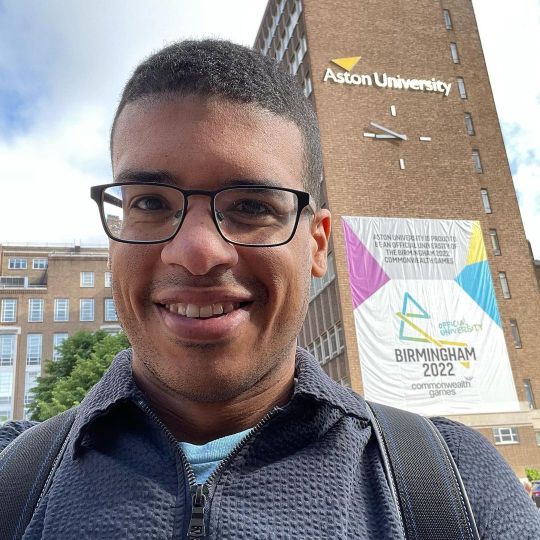
Always be learning. Every day presents a new opportunity. #astonuniversity #alwaysbelearning #lifelonglearning #everydaysaschoolday #blackled #autismacceptance #learningjourney #lancashirebusiness #businessschool #autisticlife #autisticlearning #consciousleader #triplebottomline (at Aston University) https://www.instagram.com/p/CfYY3QnjlLx/?igshid=NGJjMDIxMWI=
#astonuniversity#alwaysbelearning#lifelonglearning#everydaysaschoolday#blackled#autismacceptance#learningjourney#lancashirebusiness#businessschool#autisticlife#autisticlearning#consciousleader#triplebottomline
0 notes
Text
THE WORLD IS BROKEN
That is the starting premise. I am not going to argue with you about whether it is broken or not. It is. If you don’t believe that it is, you need to read more and better things.
I will not argue, and I will not draw out a list of examples, because then anyone who has a different point of view can draw out their list of examples to the contrary, and all that adds up to is a lot of typing and not much of anything else. I am beyond trying to prove anybody wrong. The world is broken. Either you agree, you’ll bear with me for the sake of the argument, or you are done reading this, goodbye.
It is not anyone’s fault that it is broken. And I don’t think it is broken entirely, or inherently. By definition, all problems are finite, infinity is only a concept. Even this generation-defining problem that lies ahead of us, of surviving our cumulative damage to our own life support system/planet, and determining whether the number of future generations of humans can be counted on one hand or not. I don’t think we’re predestined to fail, either as individuals or as a society. I don’t think we’re guaranteed to succeed either.
Oh, no; this might indeed blow up spectacularly. No point in dwelling on it though— waste of mental space. I like to make plans that will work whether society blows itself up or not. And in that regard, one thing that I’ve begun to suspect (feel free to argue with me on this one) is thus:
WE HAVE EVERYTHING WE NEED
All of it. Everything to live a perfect life. Every bit of useful technology has been invented. Every bit of wisdom already exists. Everything that everyone on this planet needs has been created, or can be with knowledge we have. And we have the means to access any knowledge we don’t.
I’m not just talking about surviving, I mean thriving. A life full of fulfilling work, leisure, and self-actualization. Done in a way that doesn’t dump harm onto others, or pit communities and people against one another. All of the conceptual and mechanical pieces of a healthy world are part of our reality as it exists, today. It is just a challenge of putting those pieces together.
Is this not true? Like I said, argue with me if you don’t agree. Tell me something that doesn’t exist that needs to, tell me a situation to which we have no solution. I don’t think there are any. If we heard tomorrow that no new technology was being developed, that we had to live with only the things that had been invented as of right now, in 2018, would we be any worse off for it? And if we were told, gun-to-collective-head, that we had to solve the world’s problems with only the tools and knowledge at hand, would we at least try? I think we would.
I am the one telling you. The gun is there, I can feel it on my temple when I look around. This world is broken. But it can be fixed. Right?
IT WAS NEVER FIXED IN THE FIRST PLACE
We are not trying to go back. There is no idyllic vision of the past to strive for. There has never been a sustainable human civilization on this earth, we’ve just been relatively too small to notice. It has all added up.
There is a lot of idealizing of the past going on right now. Across the political spectrum. Whether it’s some form of the back to the land movement, or people trying to Make America Great Again, we’ve managed to create in our mind a false vision that culture has fallen apart just recently.
False! Things have been bad since the Fertile Crescent. Our species’ history is a tapestry of genocide, abuse of control, and atrocity against one another. We actually live in the least violent, longest life-spanned century humans have ever had. It’s no worse now, it’s just better documented.
Not that we haven’t left things behind— in this age of information, we know more about the world, yet understand our place in it less. While the rights of individuals have advanced, communities have unraveled and eroded. As technology has made our lives more convenient, it has destroyed our relationship with the earth we live on, causing huge rifts in our cultures and economy.
We can’t go back to the past, but we can work to regain the connection to land and our communities that used to give our lives meaning. But we have to do so in a new way, one that figures out how to maintain the good advances of the last century, without the support of a global, fossil-fueled based economy.
Because what real advances have we made if we cannot sustain them? If all of our social and technological advances are based on the existence of a fragile, global food supply chain to maintain order, what happens if that collapses? Do you know what kind of people don’t care about civil rights? Starving people.
And it doesn’t look like we’re going to find a suitable replacement for gas in time, so... when it’s no longer economically-viable for companies to extract gasoline, how do we avoid the same atrocities of our more localized past? Local power now, it means family restaurants, small businesses— just a few generations ago, local power meant slavery, xenophobia, well-poisonings, witch-burnings.
How do we preserve equality, freedom of mobility, the Internet, indoor plumbing, all these new, expensive things worth saving— without subsuming everything into a homogenous global community that is burning the earth’s candle at both ends?
That is the big question I’ve been asking myself. Not whether it is possible or not, but how. And when I’ve been thinking about it, I wish I had a list of all the things a community needed to know to thrive, and a map of all the places to learn those things. So even if it’s never complete, I’m going to start building it.
#sustainability#climate change#therevolution#nonprofits#nonprofit#local#weltschmerz#fossilfuel#postmodern#2018#apocalypse#preapocalypse#triplebottomline#theoryofchange#change#changemaking#globalism#global warming
3 notes
·
View notes
Photo
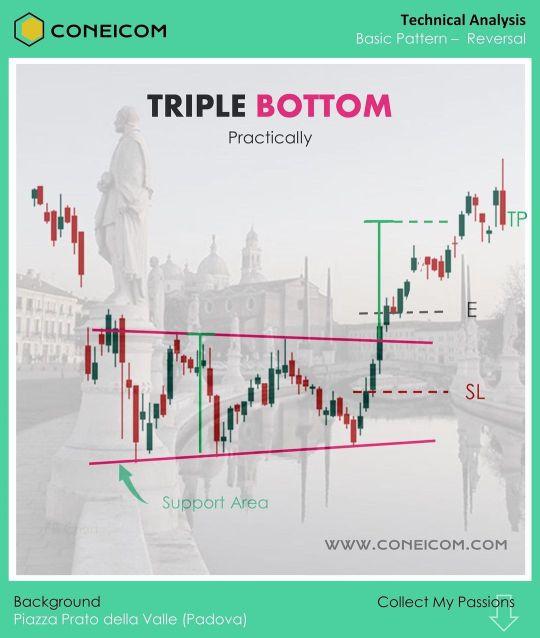
TECHNICAL ANALYSIS Basic Pattern - Reversal Triple Bottom Nella pratica il triplo mimino può essere leggermente diverso dal teorico poiché le linea di supporto e resistenza che permettono l’identificazione del pattern non sempre sono parallele tra loro. Può capitare infatti che la linea di supporto non sia perfettamente statica e che vi siano inoltre dei punti di falsa rottura che potrebbero fuorviare l’analista. Nel grafico ripropongo un bellissimo esempio di triplo minimo, verificatosi nel 2017 su Facebook (FB). Hai mai avuto modo di tardare questo pattern andando in profitto? #tradingeducation #tradingitalia #tradingpadova #coneicom #triplebottomline #facebook #facebookchart (presso Padova, Italy) https://www.instagram.com/p/CPZ3py8AMya/?utm_medium=tumblr
0 notes
Photo
Good choice!
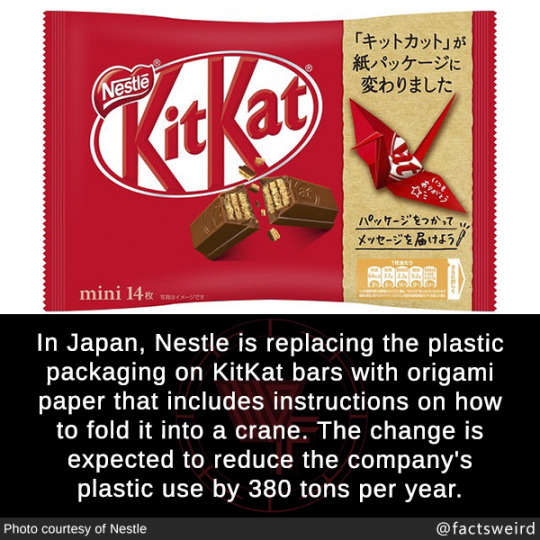
In Japan, Nestle is replacing the plastic packaging on KitKat bars with origami paper that includes instructions on how to fold it into a crane. The change is expected to reduce the company’s plastic use by 380 tons per year.
540 notes
·
View notes
Photo
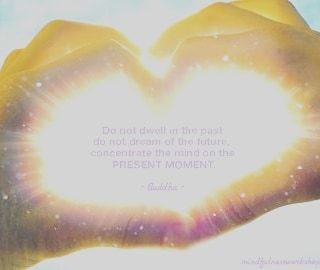
Peace Grants Also known as Mindfulness Funding are nonloan, cash grants supporting research on novel interdisciplinary approaches for investigating and nurturing wholesome mental qualities related to Prosociality, Empathy, Altruism, Compassion, and Ethics (PEACE). https://www.mindandlife.org/peace-grants/ #charity2roi #strategicfunding #triplebottomline #grantopportunities https://www.instagram.com/p/Bu-3fAIgLgN/?utm_source=ig_tumblr_share&igshid=10tfl934tinlw
0 notes
Text
How We Need to Teach Corporate Social Responsibility to our Students
Today’s undergraduate business programs play a critical role in developing the socially responsible leaders of tomorrow. While being an ethically responsible individual should seem intuitive, I feel that as educators will need to make ethics, social responsibility, and sustainability explicitly intertwined in the fabric of undergraduate business curricula.
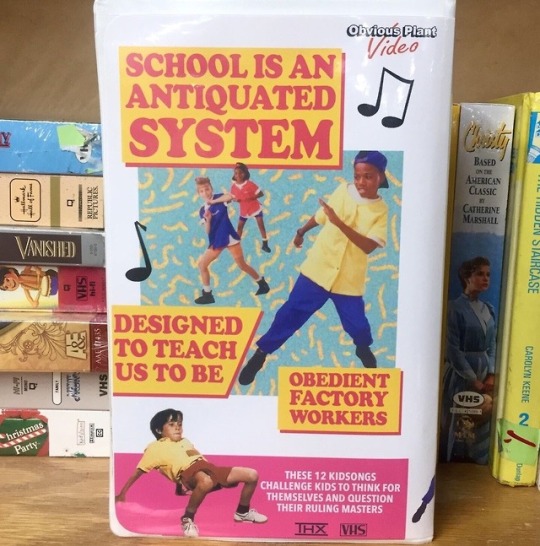
Sometimes a university’s goals can become murky, we cannot sit back and let our universities become a skill and knowledge factory (Pinar, 2004). Rather, allow educators the freedom to determine the ideals and competencies society admires to train socially responsible human beings.

Now, what might Scrooge McDuck have to do with business education you ask? He embodies the traditional image of corporate greed (maybe a bit of neoliberalism?).
While profit-generating business models remain an important part of any business school curriculum, we are now encouraging students to imagine a different perspective. Integrating Corporate Social Responsibility (CSR) can serve as an integral part of business undergrad teaching. Could it be a response to creating the better business leaders of tomorrow? I think we can all agree that CSR is important enough that it needs to become both an explicit and implicit part of the business school curricula. But how?
Corporate Social Responsibility
First, the challenge is determining an acceptable definition of CSR. With over 37 definitions of Corporate Social Responsibility (Dahlsrud, 2018), how do we know which is best? In our context, I will consider the Canadian Centre Business in the Community’s definition. To them, CSR “is the overall relationship of the corporation with all of its stakeholders. These include customers, employees, communities, owners/investors, government, suppliers and competitors. Elements of social responsibility include investment in community outreach, employee relations, creation and maintenance of employment, environmental responsibility, human rights and financial performance.” (as cited in Khoury, Rostami, & Turnbull, 1999, p.2).
Breaking it down in an even simpler way, according to Carroll (2015), there are two main aspects that individuals must consider in CSR-related teaching, protecting and improving society.
So we have covered the “what”. What about the “how”?
Active vs. Passive Learning
With a definition in our minds, we need to figure out how to best integrate it in our curricula. To answer this how question in more detail, I will implore the concepts of active and passive learning.
youtube
https://www.youtube.com/watch?v=JpB89OPDtvU
Passive learning
There is nothing wrong with a few lectures on the topic. Simply put, before deep diving into a topic, professors can help frame students’ understanding about CSR through definitions and concrete examples. Let’s go back to the idea of protecting and improving society.
1. Protecting society is where companies should aim to minimize the negative impact of their products or services. (Example: avoid toxic paints in children’s toys). Lego is another prime example of a company who walks the walk when it comes to CSR. From using plant-based polyethelene, recycling 93% of operational waste, and investing in renewal energy (Valet, 2019).
2. Improving society takes a more proactive stance on its societal impact wherby they create positive benefits. (Ex: Support a charitable organization in the local community.) Not to be outdone, Danone has demonstrated quality CSR in it’s “One Planet. One Health.” program (Valet, 2019).
So, it is a little dry, but it does serve a purpose.
Active Learning
On the other hand, learning through CSR can provide students with the opportunity to become actively engaged in their learning through case studies, internships, social entrepreneurship, applied research projects (consulting), role playing, simulations, etc... This is a stark contrast to Pinar’s picture of our “nightmare” curriculum.
As educators, we can use case studies to spark discussion and reflection like Samsung’s use of virtual reality in Jordan.
youtube
What is the message of this video? How is Samsung demonstrating CSR? What is the impact on society?
Furthermore, experiential learning opportunities like internships with non-profit organizations can go a long way in educating students in CSR more profoundly. In line with active learning, Kolb’s 1984 Experiential Learning Cycle can complement such as experience for students.
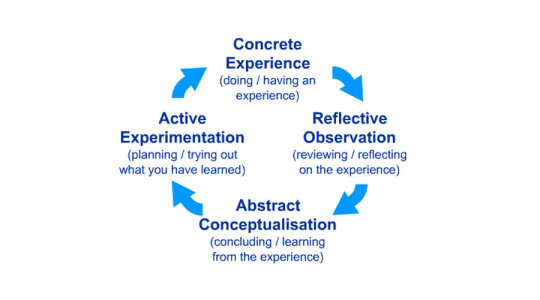
The concrete experience is the non-profit internship. Following the internship, students reflect upon the competencies for which they have learned from the experience. They then wrap up (abstract conceptualization) their experience and learning in a final report. Finally, an example of active experimentation would be that the student becomes a social entrepreneur using what they learned from their internship.
While Tormo-Carbó et al. (2016) indicate that they measured no significance difference in a student’s ability to demonstrate knowledge of ethics and social responsibility, regardless of having had a been exposed to a course on the topic or not, I firmly disagree on this point! While a course in a passive learning environment could very well lead to less than optimal learning, experiences grounded in active and experiential learning have the profound opportunity to evoke real change in business students.
Is CSR Enough?
The triple bottom line (TBL) was a concept brought to light by John Elkington in 1998. Triple bottom line theory argues that a company’s success is not just based on the profits they generate. While a focus on profits (economical) is surely important, businesses should equally consider the people (social), and planet (environmental) perspectives as well. But is teaching CSR and TBL really enough?
Elkington, himself has recently written an article for Harvard Business Review recalling the term TBL (Elkington, 2018). From his standpoint, it was meant to transform capitalism, not just become another accounting principle or way of deriving “value” from a company. This is one way to ensure business students consider a multi-faceted approach to business learning.
Finally, the Boston Consulting Group (BCG) argues that CSR is not truly sustainability and will dry up in times of economic downturn. What we need to be considering is Total Social Impact (TSI).
Bottom Line?
What are the salient points for educators with respect to teaching CSR?
Don’t let your course(s) become factory training sessions!
Find definitions that speak to the holistic approach to CSR.
Actively engage students in their learning.
Always present the full picture and counter arguments.
Peace & love.
REFERENCES
Carroll, A.B. (2015). Corporate social responsibility: The centerpiece of competing and complementary frameworks. Organizational Dynamics, 44(2), 87-96. DOI: 10.1016/j.orgdyn.2015.02.002
Dahlsrud, A. (2008). How corporate social responsibility is defined: An analysis of 37 definitions. Corporate Social Responsibility and Environmental Management, 15, 1–13. DOI: 10.1002/csr.132
Elkington, J. (1998). Cannibals with forks: The triple bottom line of 21st century business. Gabriola Island, BC: New Society Publishers.
Elkington, J. (2018). 25 years ago I coined the phrase “triple bottom line.” Here’s why it’s time to rethink it. Harvard Business Review. Retrieved from https://hbr.org/2018/06/25-years-ago-i-coined-the-phrase-triple-bottom-line-heres-why-im-giving-up-on-it
Khoury G, Rostami, J., & Turnbull, P.L. (1999). Corporate social responsibility: turning words into action. Retrieved from https://www.conferenceboard.ca/temp/467bebf9-a4f1-4c32-92bb-6736da679016/255-99mb.pdf
Kolb, D. A. 1984. Experiential learning: Experience as the source of learning and development. New Jersey: Prentice-Hall.
Pinar, W.F. (2014). What is curriculum theory? Mahwah (NJ): Lawrence Erlbaum Associates.
Tormo-Carbóa, G., Oltrab, V., Seguí-Masa, E., & Klimkiewiczc, K. (2016). How effective are business ethics/CSR courses in higher education? Procedia - Social and Behavioral Sciences, 228, 567-574. DOI: 10.1016/j.sbspro.2016.07.087
Valet, V. (2019). The world’s most reputable companies for corporate responsibility 2019. Forbes. Retrieved from https://www.forbes.com/sites/vickyvalet/2019/09/17/the-worlds-most-reputable-companies-for-corporate-responsibility-2019/#45d96ebd679b
1 note
·
View note
Text
Waste
Most of the resources humans use comes from the lithosphere. These resources are metals and rare Earth elements like platinum, gallium, indium, neodymium, and dysprosium. These resources are non-renewable. For example, there is only 13 years left worth of indium at the rate we are using it now. The triple bottom line is an accounting framework with three parts: social, environmental (or ecological) and financial. Some organizations have adopted the Triple Bottom Line framework to evaluate their performance in a broader perspective to create greater business value.

Permaculture Ethics, Corporate Sustainability & the Triple Bottom-Line: Explained: Triple bottom line, Sustainability, Corporate social responsibility. (n.d.). Retrieved from https://www.pinterest.com/pin/708613322597976687/?autologin=true.
Pollution Control and Conservation of Natural Resources
Every piece of material in a garbage can carries with it large quantities of embedded energy and invisible material resources that were part of its life history. Behind every object are the mining of resources or cutting of trees, the transport of ingredients and components by fossil fuel-burning vehicles, production in factories, more production for packaging, and transport again as the product is distributed. Most of the life cycle of a product remains invisible to us.
Robertson, M. (2017). Sustainability Principles and Practice. Abingdon, Oxon: Routledge.
Life cycle analysis is how to look at the life cycle of products we consume. It’s used to evaluate the environmental impact of a product through its life cycle encompassing extraction and processing of the raw materials, manufacturing, distribution, use, recycling, and final disposal.

Life Cycle Assessment: finding the best approach for your company. (n.d.). Retrieved from https://www.innovationservices.philips.com/news/life-cycle-assessment-finding-best-approach-company/.
In class, my group looked at the life cycle of tires.

Life-cycle analysis. (n.d.). Retrieved from http://www.ruconbar.com/about-the-product/life-cycle-analysis/.
This made us look into new ways to use tires after they cannot be used for what they were originally made for. We wanted the life of the tires to be longer in order to reduce environmental impact. Instead of a ‘cradle to grave’ situation, we wanted a ‘cradle to cradle’ situation in which the tire could go from one form of use to another continuously.
This concept was discussed by William McDonough his TED talk.
youtube
Cradle to cradle design: William McDonough. (2007, May 17). Retrieved from https://youtu.be/IoRjz8iTVoo.
The waste management hierarchy is a framework for minimizing waste streams. Pollution prevention and waste reduction are closely related and sometimes managed by the same work group within an organization. The Pollution Prevention(P2) hierarchy is a widely adopted framework for preventing or reducing pollution and waste (US EPA 2013a). Its steps, in descending order of priority, are prevention or reduction, reuse, recycling, treatment, and disposal. The highest priority is to prevent pollution at its source by reducing the amount generated. Following prevention, the next strategy is to reuse, then to recycle. Pollution that cannot be reduced or recycled is treated. As a last resort, pollution is disposed of as safely as possible.
Robertson, M. (2017). Sustainability Principles and Practice. Abingdon, Oxon: Routledge.
Our resources are so depleted because as population increases, the production of goods increases. As the production of goods increases, the production of waste increases. This is why we need to move toward a more circular economy in which we are reducing the amount of waste that is produced.
Materials collected for recycling are transported to a central material recovery facility, or MRF (pronounced “murf”), where they are sorted. In commingled, or single stream, recy-cling all the MSW material considered recyclable is mixed together. Material is dumped onto conveyor belts where preliminary manual sorting is done. Air blasts separate lightweight plastic containers, which are sorted by type either manually or using infrared spectroscopic scanners. Electromagnets remove ferrous metals such as food cans, and eddy current separa-tors remove aluminum such as beverage cans. Other sorters separate corrugated cardboard, newsprint, and mixed paper.
Robertson, M. (2017). Sustainability Principles and Practice. Abingdon, Oxon: Routledge.
#environmental impact#environmental activism#Environment#sustainability#sustainable#greenliving#triplebottomline
0 notes
Video
Because we’re #hippieentrepreneurs and we love the planet 😂 #triplebottomline ——————— #entrepreneur #goals #motivation #inspiration #inspire #lifestyle #success #business #workout #money #marketing #startup #hustle #entrepreneurlife #luxury #businessowner #businessmen #boss #businesswomen #entreprenuer #entrepreneurlifestyle #entrepreneurship #businessminded #businesscoach #courage #idea #entrepreneurs #company (at New Orleans, Louisiana) https://www.instagram.com/p/BwlD7V-nIdW/?utm_source=ig_tumblr_share&igshid=2e4vusrt6b4u
#hippieentrepreneurs#triplebottomline#entrepreneur#goals#motivation#inspiration#inspire#lifestyle#success#business#workout#money#marketing#startup#hustle#entrepreneurlife#luxury#businessowner#businessmen#boss#businesswomen#entreprenuer#entrepreneurlifestyle#entrepreneurship#businessminded#businesscoach#courage#idea#entrepreneurs#company
0 notes
Photo
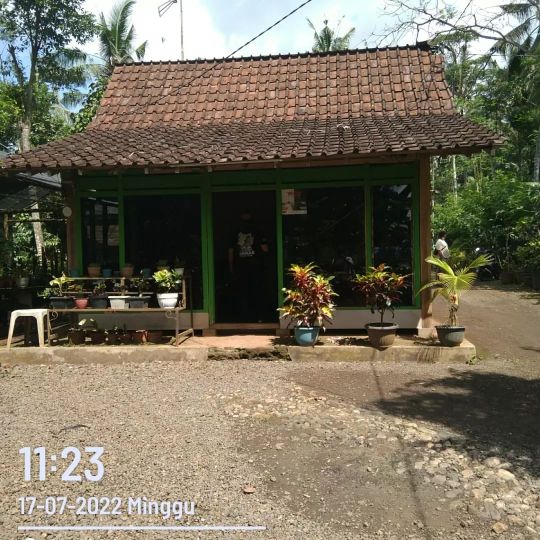
Perjalanan ke Timur (01)... Kampung SDGs... Lingkungan Secang Mangir... Kelurahan Kalipuro... Kecamatan Kalipuro... Kabupaten Banyuwangi... Setelah berangkat kesiangan... Harus membelah kemacetan pula... Dipilih jalur lewat Bondowoso melalui Kawah Wurung & Kampung Sempol arah ke Puncak Ijen... Hari pertama, setelah berjumpa & diskusi pagi dengan Ustad Ayum, menjelang siang dilanjutkan berkunjung ke Ustad Ayum, di Lingkungan Secang Mangir, Kelurahan Kalipuro, Kecamatan Kalipuro, Kabupaten Banyuwangi. Kampung yang mendeklarasikan diri sebagai Kampung SDGs... Seperti mendapat durian runtuh, beberapa hari sebelumnya memfasilitasi SDGs/TPB dengan Perspektif Korporasi, beberapa kali memfasilitasi SDGs Desa, kali ini memfasilitasi SDGs berperspektif Kampung. Iya Kampung, bukan desa (rural) bukan pula perkotaan (urban), tapi kampung (sub urban)... Menjadi tantangan tersendiri tapi juga menjadi peluang untuk belajar lebih lagi tenang Tujuan Pembangunan Berkelanjutan (SDGs). Berkolaborasi & bersinergi dengan berbagai lembaga & masyarakat yang lebih luas... Bersama Tim Akademi Kopi, Komunitas & Konservasi (AK3) Banyuwangi bermarkas di Pendopo Kembang Galengan, Lingkungan Secang Kemiren, Kelurahan Kalipuro, Kecamatan Kalipuro, Kabupaten Banyuwangi, Komunitas yang ingin membangun Desa atau Kampung Berkelanjutan dengan menggunakan Kopi Ekselsa atau Liberika untuk menjaga lestarinya kebun dan hutan dengan prinsip agroforestry... Niatan baik yang semoga saja bisa berjalan baik dan menghasilkan hasil yang baik dengan manfaat & dampak seluas2nya bagi banyak orang, bagi lingkungan & bagi kehidupan... Kampung Secang Mangir... Kelurahan Kalipuro... Kecamatan Kalipuro... Kabupaten Banyuwangi... Minggu, 17 Juli 2022... #AkademiKopiKomunitasKonservasi #PendopoKembangGalengan #SecangMangir #KelurahanKalipuro #KecamatanKalipuro #KopiLiberika #KopiEkselsa #Agroforestry #TujuanPembangunanBerkelanjutan #SustainableDevelopmemtGoals #SDGs/TPB #TripleBottomLine #PendekatanPenghidupanLestari #SustainableLivelihoodApproach #SLA/PPL #KampungSDGs (di Kalipuro, Banyuwangi, Jawa Timur - Indonesia.) https://www.instagram.com/p/CgMZcyRp65a/?igshid=NGJjMDIxMWI=
#akademikopikomunitaskonservasi#pendopokembanggalengan#secangmangir#kelurahankalipuro#kecamatankalipuro#kopiliberika#kopiekselsa#agroforestry#tujuanpembangunanberkelanjutan#sustainabledevelopmemtgoals#sdgs#triplebottomline#pendekatanpenghidupanlestari#sustainablelivelihoodapproach#sla#kampungsdgs
0 notes
Video
Ad Daarul Misk LLC Stop and Shop Black Seed 2oz pack - $5 Black Seed Oil 1oz bottle - $5 Call to place an order! 267-593-6472 #homebasedbusinessowner #hustlefromsavethepkanet #triplebottomline #people #planet #profit #addaarulmiskllc #stopandshop #attuur #designerfragrances #essentialoils #essentialfragrances #crueltyfreeproducts #100%naturalproducts #organicproduct #certifiedfairtradeingredients #certifiedorganic #naturalsoaps #haircare #naturaltoothpaste #duduosumshampoo #dudusumconditioner #duduosumliquidblacksoap (at Ad-Daarul Misk, LLC)
#duduosumshampoo#dudusumconditioner#stopandshop#people#100#certifiedorganic#haircare#duduosumliquidblacksoap#naturalsoaps#triplebottomline#attuur#essentialfragrances#homebasedbusinessowner#certifiedfairtradeingredients#profit#essentialoils#designerfragrances#addaarulmiskllc#planet#crueltyfreeproducts#hustlefromsavethepkanet#naturaltoothpaste#organicproduct
0 notes
Photo
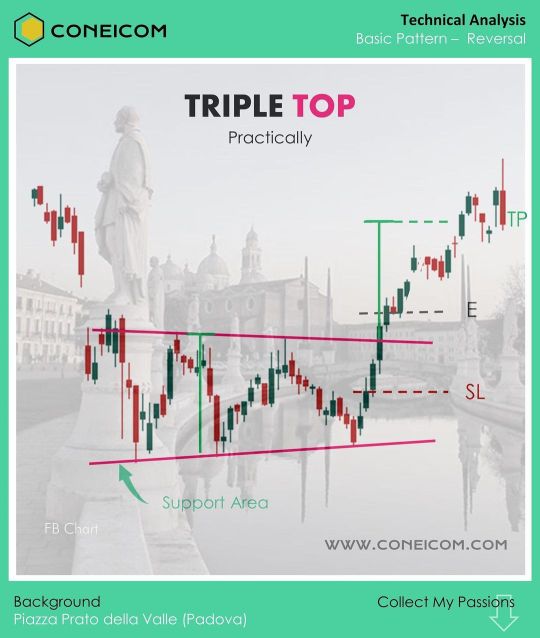
TECHNICAL ANALYSIS Basic Pattern - Reversal Triple Bottom Nella pratica il triplo mimino può essere leggermente diverso dal teorico poiché le linea di supporto e resistenza che permettono l’identificazione del pattern non sempre sono parallele tra loro. Può capitare infatti che la linea di supporto non sia perfettamente statica e che vi siano inoltre dei punti di falsa rottura che potrebbero fuorviare l’analista. Nel grafico ripropongo un bellissimo esempio di triplo minimo, verificatosi nel 2017 su Facebook (FB). Hai mai avuto modo di tardare questo pattern andando in profitto? #tradingeducation #tradingitalia #tradingpadova #coneicom #triplebottomline #facebook #facebookchart (presso Padova, Italy) https://www.instagram.com/p/CPZ3LDMgeJc/?utm_medium=tumblr
0 notes
Photo
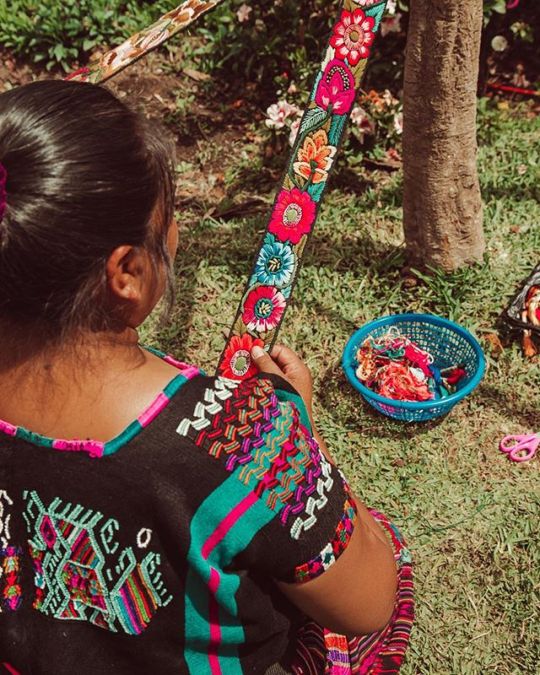
To maintain a minimal footprint, when we are not repurposing textiles we make sure to create in small batches. Smaller batches reduce the risk of waste and allow us to maintain sustainable production choices🌱🙌🏼 __⠀⠀⠀⠀⠀⠀⠀⠀⠀ @ericalatack photography #smallbatch #ethicallymade #ecofashion #zerowaste #buylesschoosewell #triplebottomline — view on Instagram https://ift.tt/2Y5IQEr
2 notes
·
View notes